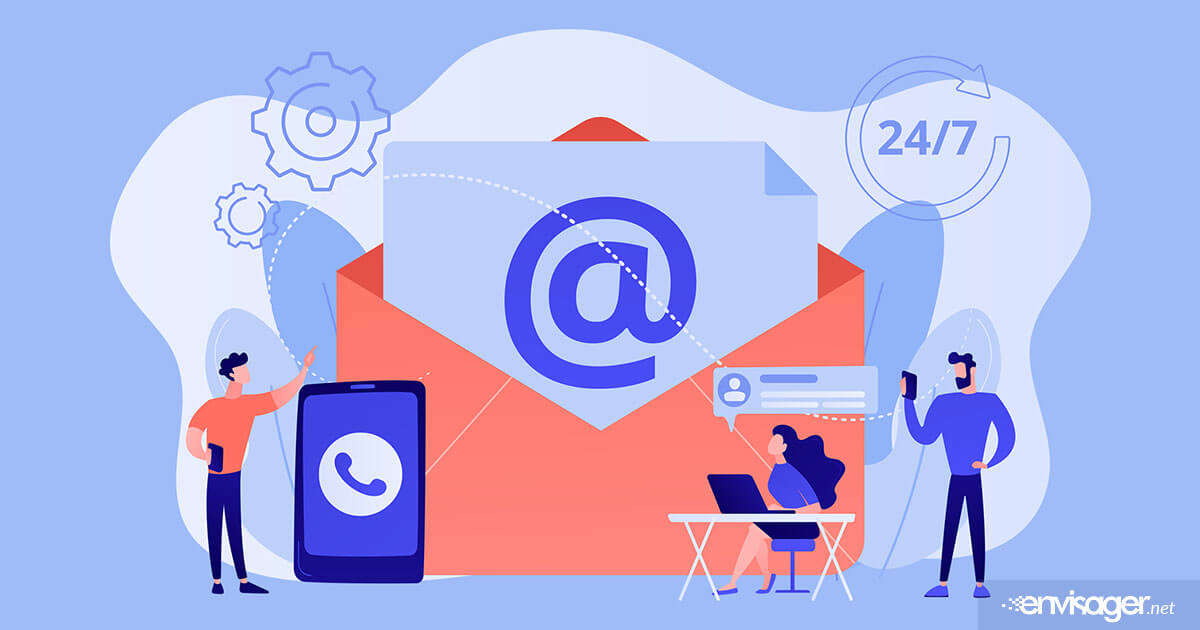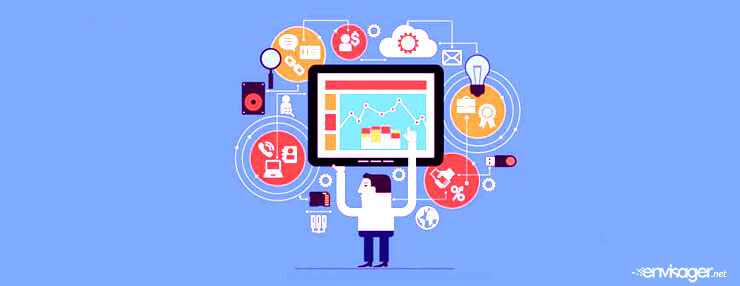Difference Between Marketing Automation and Email Marketing

Digital marketing is exploding due to advancements in technology. Businesses focused on expanding their client base have invested heavily in various digital marketing strategies. And this includes email marketing and social media marketing.
According to an eMarketer study, the average return on investment from email marketing is 122%. None of the other digital marketing methods such as paid search and social media marketing can match its high performance.
In recent years, marketing automation has also proven to help brands take their business to the next level. And businesses using this form of marketing generated 32% more revenue than the average companies who aren’t using it.
This article will focus on marketing automation and email marketing. We’ll briefly discuss what each strategy means, the key differences, and how to use both to obtain better results.

What is Email Marketing?
Email marketing involves sending out emails with information about your products, services, and brand to current and potential customers. The email includes links to the main website to encourage the recipient take the desired action.
In 2019, more than 3.9 billion people used emails to communicate. And this number is projected to hit 4.48 billion by 2024. So, it’s no surprise to learn that businesses invest thousands of dollars in email marketing campaigns.
Additionally, for every $1 spent on the form of marketing, the ROI is $42.

What is Marketing Automation?
Marketing automation entails using generation software to monitor how customers digitally interact with your brand. The data collected gives the business owner a 360-view of the prospect. Business owners can then use the various digital breadcrumbs to motivate the prospect to convert.
However, ‘automation’ doesn’t mean hands off. First, you must ensure that the marketing automation software is right for your brand. Secondly, you’ll need a team of professionals to monitor and interpret the generated reports.
Key Differences Between Marketing Automation and Email Marketing
Both marketing automation and email marketing are helpful in keeping your brand ahead of the competition. However, there are five key differences between these two marketing tools that you should keep in mind.
1. Website and Email Behavior Tracking
One of the notable differences between the two strategies is the the data they collect from the target audience. The automation method has built-in tools to keep track of the email recipient’s behavior.
For example, the tool lets you know if the recipient opened the email. Additionally, you can see the links they clicked on after opening it. You can also see how many times the recipient clicked on a link. This data can then be aggregated into a report. The report will show percentages to help you know if your campaign is delivering the expected results.
Marketing automation software tracks customers’ behavior at every stage of your website. You’ll know the pages visited, links clicked on, content they watched or downloaded, and many other forms of essential data.
In fact, marketing automation gives you a clear picture of the customer’s journey through the sales funnel. Analyzing the information, you can create exceptionally focused campaigns.
Conversely, traditional email marketing strategies are usually based on stale data.
2. Single Path or Customer Oriented Messaging
In addition to collecting email addresses, email marketing requires lots of time and resources. So, creating eye-catching campaigns and conducting extensive post delivery analytics is highly recommended.
The results may be minimal when you send out emails to subscribed customers. This happens because the message may be irrelevant to me. Instead, use modern email marketing software to segment the recipients. That way, different customers receive different emails based on their past interactions with your brand.
Given that automated software is featured-rich, you could invest in a drip campaign. In this campaign, you can set the software to automatically send a series of emails to potential customers over time.
3. Revenue Attribution and Assumption
Using a professional email subscription service, the recipient’s call to action results. Plus, the customer relationship management component gives you insight whether the customer purchased.
Albeit you cannot conclude the email influenced the buying decision if the customer takes weeks to purchase. Because the customer could have interacted with other touch points on your online store. In reality, this is why many marketers are unable to accurately calculate the ROI after email marketing.
Different from email marketing, marketing automation offers tracking the buyer’s complete journey. This means you’ll know their first site visit and all the way through checkout.
4. Dynamic Lead Scoring
Lead scoring is a method used by marketers to determine the worthiness of a customer. Values are assigned to customers based on their degree of interest for a product/service. Using marketing automation, you can collect data that helps gauge the intent of the segmented audience.
To demonstrate, your best customer generates $5,000 in revenue per month. You can then create a specific form with questions such as ‘What is your average monthly revenue?’. Customers with the highest revenue or near $5,000 are assigned a higher score compared to the rest.
The data collected from such forms will help you to identify potential customers quickly. The information will also be important when creating custom campaigns for different groups of customers.
In contrast, email marketing relies solely on the information that you input about your customers. In general, this information is usually just the contact details. Therefore, it is unable to go beyond the surface to provide more valuable insights about the market.
So, you’ll have no option but to invest in another analytics tool to collect and analyze additional insights. If this is the case, using multiple tools to complete one task is not recommended. Not only is it not cost-effective, but it’s also an ineffective way of doing business.
5. Simple Automation and Intelligent Follow-Up
Email marketing tools have been vague, until now. The modern ones have automation components. However, the primary capabilities are dependent on the platform’s sophistication.
In the advanced marketing automation systems, different segmentation filters can be applied to audiences. But a simple system only allows you to schedule email blasts.
Wrapping It Up
Now that you know the main differences between marketing automation and email marketing, how does your software stack up? Envisager Studio is a leading internet marketing agency in San Diego. Our services include SEO, SMM, SMO, PPC, and content marketing services to ensure your website ranks well in search engines. We’re also a top choice in the website design company San Diego area. Our website design and web development services are offered at affordable prices. For further information, please contact us today.
You may also enjoy reading: Ecommerce Website Design Guide For Success Selling Online

Hazel Burgess
FOUNDER/SEO DIRECTOR
Hazel is the Founder & SEO Director at Envisager Studio, a premier website design agency specializing in WordPress website design, development and internet marketing. In her spare time, she writes about search engine optimization, website design, and internet marketing.


